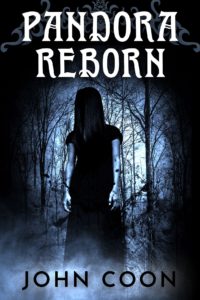
Building fictional worlds is so much fun as an author. One of the best parts is weaving backstories for each character and setting that appear in my story. I will fill page after page with character biographies and personalities, historical events, geographic settings, and other information relevant to that fictional universe.
Weaving these backstory threads into the main narrative can serve a useful purpose. It makes each character and setting feel more alive and real to both author and audience. Your plot feels more organic because the actions that your characters take are informed by important backstory elements like their histories and personalities.
Incorporating backstory elements into your main plot or key subplots requires a surgical touch. You want to draw your audience into your fictional world without engaging in information overload. 
A significant percentage of traditionally published authors and indie authors alike struggle with deciding where to draw the line when including backstory material. These authors become too fascinated by their own creations and lose sight of what information is relevant to the story at hand. They cram backstory onto page after page until much of their novel reads like an unending series of Wikipedia articles.
Including too much backstory at one time bogs down a story’s pace. Readers aren’t dying to read lengthy information dumps on politics, history, culture, religion, and other topics tangentially related your fictional world. Doing it early and often runs the risk of driving them away.
Always ask yourself these questions when considering if you should include any backstory element:
- Does it move the plot forward in a meaningful way?
- Will it forge a better understanding of and deeper connection with a key character?
 If including a backstory element enhances rather than detracts from the main story, always incorporate it organically in small amounts. You don’t want any element to interrupt the flow and pace of the narrative.
If including a backstory element enhances rather than detracts from the main story, always incorporate it organically in small amounts. You don’t want any element to interrupt the flow and pace of the narrative.
I created an extensive backstory for Pandora Reborn. It included sketches of all primary and secondary characters in the novel, a history of Deer Falls, a medieval legend related to the antagonist’s origins, and broader mythology involving other supernatural protagonists and antagonists in that fictional world. Only a small percentage of what I jotted down in my notes made it into the actual novel. I sprinkled in whatever elements drove the plot and characters forward and simply left the rest of it to the imagination of my audience. I’m following the same path with my upcoming novel, Under a Fallen Sun, in introducing that fictional world.
Ultimately, that’s what backstory is designed to do. Backstory elements serve the purpose of offering a snapshot of a larger world than what is written down on each page.
That’s the keyword. Snapshot.
Backstory details should never divert readers into plunging down a rabbit hole away from the main story. They aren’t likely to find their way back to the surface and, in the end, you end up with a bored, dissatisfied reader.